Given is a signal from a NB-FM-Receiver  in GNU Radio Companion.
This signal consists of a series of identifiers (ending with
in GNU Radio Companion.
This signal consists of a series of identifiers (ending with ZVEI1: 89E9EA) in the ZVEI1 standard and followed by a useful signal.
The signal is branched off to multimon-ng through a FIFO-Pipe.
mulimon-ng reads the signal and decodes the signal according to:
multimon-ng -a ZVEI1 -t raw myfifo.raw
multimon-ng 1.1.8
(C) 1996/1997 by Tom Sailer HB9JNX/AE4WA
(C) 2012-2019 by Elias Oenal
Available demodulators: POCSAG512 POCSAG1200 POCSAG2400 FLEX EAS UFSK1200 CLIPFSK FMSFSK AFSK1200 AFSK2400 AFSK2400_2 AFSK2400_3 HAPN4800 FSK9600 DTMF ZVEI1 ZVEI2 ZVEI3 DZVEI PZVEI EEA EIA CCIR MORSE_CW DUMPCSV X10 SCOPE
Enabled demodulators: ZVEI1
ZVEI1: 83702
ZVEI1: 89E9EA
which works fine.
Now the decoded message should be read from multimon-ngs output and looped back into GNU Radio Companion to mute
- the identifiers
- selectively the signal that follows
ZVEI1: 89E9EAaccording to the previous identifiers.
How can this be accomplished?